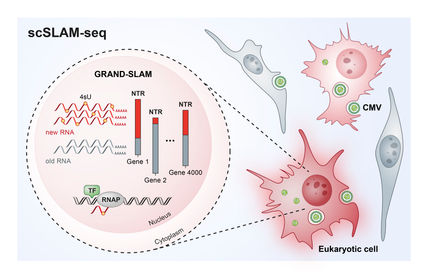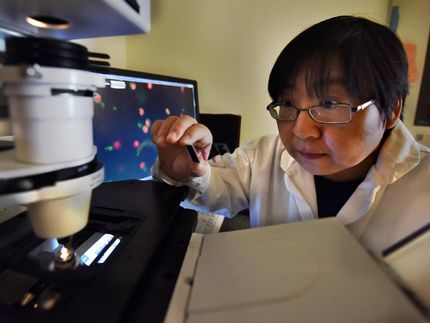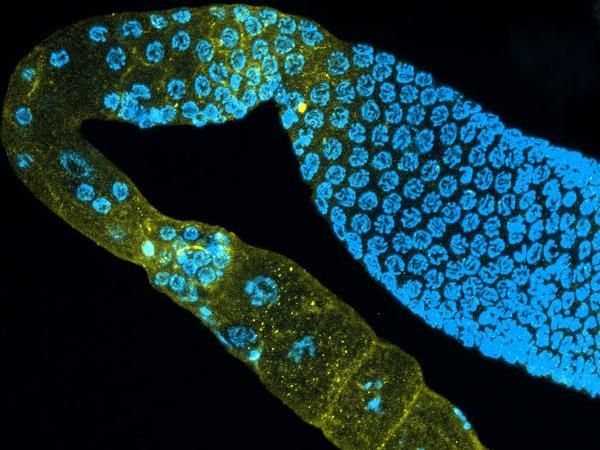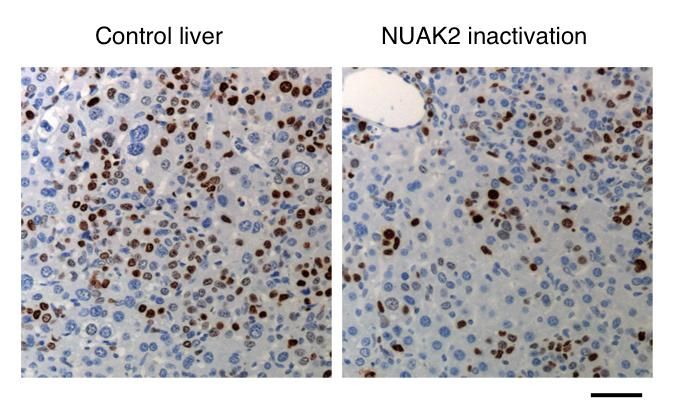How small RNAs enter mammalian cells
Mechanism for the in-vivo transport of siRNA
RNA interference, a natural mechanism that inhibits the gene expression of individual genes in eukaryotic cells, is a major topic in modern biology. However, their potential was usable to only a limited extent in mammals because the mechanism for the uptake of small RNAs was unknown up to now. ETH Zurich biologists have now clarified this, which also opens the door for therapies based on this mechanism.
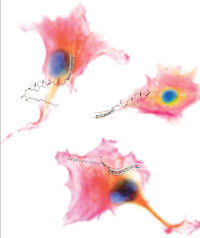
ETH Zurich researchers have succeeded in elucidating the mechanism for the uptake of siRNA in combination with fatty acids in mammals.
© 2007 ETHZ
It all started with flowers: in the nineties of the last century Norwegian researchers discovered that additional copies of a particular gene in petunias inhibited its activity instead of reinforcing it as had been assumed. A few years later it was found that the mechanism is based on the degradation of messenger RNA in the cells. Finally, in the late nineties the Nobel prizewinners Andrew Fire and Craig Mello established the technique of RNA interference, in which double-stranded RNA switches genes off efficiently and specifically. The scientists used the nematode (roundworm) Caenorhabditis elegans to study this. Subsequently, however, considerable problems arose in the attempt to transfer the strategy used by Mello and Fire to vertebrates. In particular the administration of small RNAs, known as siRNAs (small interfering RNAs), in animals proved difficult. Although it was possible to administer siRNAs successfully by using various methods such as high-pressure injections or in conjunction with cholesterol, the underlying mechanisms remained obscure. Markus Stoffel, ETH Zurich Professor at the Institute for Molecular Systems Biology, together with chemists from the Alnylam Company, has now succeeded in elucidating the mechanism for the uptake of siRNA in combination with fatty acids in mammals. The corresponding paper, which has just been published in the scientific journal "Nature Biotechnology" and will also adorn the title page of the printed version in October, represents the basis for possible siRNA therapies, among other things. This is because Stoffel showed that siRNA can be coupled effectively to various fatty acids.
Cholesterol transporters also play a part
Stoffel and his team turned to chemically modified siRNAs in combination with cholesterol, not because the method based on this compound was particularly efficient but because it had the least side-effects. First of all the researchers wanted to know whether siRNA was capable of being bonded to other lipophilic substances in addition to cholesterol, and caused a reduction in the activity of a target gene in the liver at the same time. It turned out that there are several such fatty acids. But what is it in the blood to which all these RNAs conjugated with so-called lipophilic substances bond? The ETH Zurich researchers discovered that, depending on the fatty acid used, the binding partners are the well-known cholesterol transporters High Density Lipoproteins (HDL) and Low Density Lipoproteins (LDL) as well as the albumin (protein) present everywhere in the blood. Without these lipoprotein particles there is no uptake of siRNAs into the tissues, as became apparent from further experiments. In an additional experiment the scientists demonstrated that the uptake can be made considerably more efficient if the siRNA-fatty acid molecules are already firmly bonded to HDL and LDL before being administered. Stoffel's team also discovered that there is preferential uptake into different tissues depending on whether an siRNA-fatty acid molecule is bonded to HDL or LDL: all LDL compounds trigger responses in the liver, but HDL compounds also do so in the intestine or kidneys.
An irritating finding
The latter finding indicated that the uptake proceeds via HDL and LDL receptors. The researchers proved this assumption by inactivating the receptors, with the result that uptake no longer occurred. Despite the clarity of the finding, it irritated Stoffel slightly. He found it hard to imagine that the siRNAs were able to enter the cell via the normal absorption route like HDL, because this route leads into the cell's own digestive system with lysosomes that would degrade the siRNAs. So how would the siRNAs be able to avoid this degradation? Stoffel concluded that they simply use a different doorway into the cell. Thus the HDL and LDL receptors would only act as docking stations but not as an entry portal.
But what might the alternative doors be? The ETH Zurich researchers remembered that a gene product Sid1, which is necessary for the cellular uptake of siRNA, occurs in the worm Caenorhabditis elegans. The corresponding gene also has a homologue in mammals. By inactivating it, the scientists showed that it is also necessary in mammals. The overall result from all the discoveries is a mechanism for siRNA administration that starts with the bonding of siRNAs to particular fatty acids. This combination is linked to lipophilic proteins that bring about docking onto the tissue cells. The doors that allow the siRNA-fatty acid molecules to enter are then situated close to the docking station.
Prospects for new therapies and research
Stoffel thinks that through their work they were able to determine the elements that are most important for the uptake mechanism. However, he says it is very likely that yet more molecules play a part. But since an insight into the mechanism now exists for the first time, it will be possible to make specific improvements in the technique. For example Stoffel's group wants to find out whether HDL and LDL can be replaced by synthetic proteins or lipid-rich particles. He says that basically the technique has the potential to be used in gene therapy. However, the determination of the siRNA doors also opens up new approaches to fundamental research. Instead of siRNA it might also be possible to smuggle in miRNAs, another group of small RNAs, in the same way. The same mechanism ought to work for miRNA inhibitors as well. Since miRNA is increasingly "suspected" of occupying a decisive role in gene regulation in nature, its targeted administration or inhibition could yield completely new insights.
Other news from the department science
Most read news
More news from our other portals
See the theme worlds for related content
Topic world Gene therapy
Genetic diseases once considered untreatable are now at the center of innovative therapeutic approaches. Research and development of gene therapies in biotech and pharma aim to directly correct or replace defective or missing genes to combat disease at the molecular level. This revolutionary approach promises not only to treat symptoms, but to eliminate the cause of the disease itself.

Topic world Gene therapy
Genetic diseases once considered untreatable are now at the center of innovative therapeutic approaches. Research and development of gene therapies in biotech and pharma aim to directly correct or replace defective or missing genes to combat disease at the molecular level. This revolutionary approach promises not only to treat symptoms, but to eliminate the cause of the disease itself.
